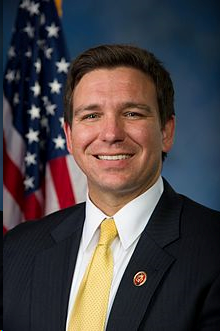DeSantis: Use Trump tax plan to expand charter schools – By Andrew Atterbury, Politico
Gov. Ron DeSantis wants to leverage a tax incentive championed by President Donald Trump to launch a five-fold expansion of charter schools in the state.
Some 250 Florida communities could be candidates for the new charter schools under the DeSantis plan.
The DeSantis budget proposed linking the state‘s Schools of Hope program to federal "opportunity zones"created by Trump’s $1.5 billion tax plan. The zones, which were championed by policymakers on the left and right, offer tax incentives to encourage private investment in economically distressed and lower-income communities.
At least 247 Florida communities would be eligible for Hope schools, up from 47 currently, if lawmakers approve the DeSantis plan. The governor’s budget also includes additional incentives to charter schools, such as money for construction.
Hope schools currently are permitted to open their doors only near “persistently low-performing schools” that fail to earn a grade of C or better from the state three years in a row. The program was championed in 2017 by then-House Speaker Richard Corcoran.
About 50 schools were on the list in 2017-18.
Opportunity zones were created by the federal Tax Cut and Jobs Act of 2017 with the goal of reducing taxes for job creators while encouraging investment and attracting business to underdeveloped communities. Former Gov. Rick Scott recommended 247 communities across Florida for the program.

Getting Clearer Signals From Employers – By Paul Fain, Inside Higher Ed
A wide range of employers have complained for years that higher education is failing to adequately prepare students to join the work force. However, a growing number of businesses are owning some of the blame for the disconnect between college and jobs.
Employers too often send the wrong signals about the skills their workers need, according to the U.S. Chamber of Commerce Foundation’s Center for Education and the Workforce. That lack of clarity causes problems for job seekers as well as employers and postsecondary education providers.
“Everybody writes job listings in their own language,” said Kemi Jona, associate dean for undergraduate programs at the Northeastern University’s College of Professional Studies. The result, he said, is a “big mess that nobody can understand.”
To help create a more coherent jobs marketplace, the center brought together a group of more than 150 colleges, foundations, HR groups, associations, technical standards organizations and major employers, including Salesforce, Google, IBM, LinkedIn and the U.S. Navy.
Walmart and the Lumina Foundation are helping to fund the group, which is dubbed the T3 Innovation Network. Created last year, the network’s goal is to use standardization about needed job skills, or competencies, and open data systems to “better align student, work-force and credentialing data with the needs of the economy.”

1.3 Million Homeless Students: New Federal Data Show a 70 Percent Jump in K-12 Homelessness Over Past Decade, With Big Implications for Academic Performance – By Mark Keierleber, The 74
Student homelessness has hit an all-time high following a significant spike over the past three years, with 20 states experiencing a surge of 10 percent or more, new federal data released last week indicate. The data also found that students who experience homelessness are significantly less likely to graduate from high school.
More than 1.3 million public school students experienced homelessnessduring the 2016-17 school year, a 7 percent increase over three years ago and the largest number ever recorded. Over the past decade, the population of students experiencing homelessness has spiked by a startling 70 percent.
Several factors might have contributed to the growth in student homelessness. Among them are lingering effects of the recession, local economic issues, natural disasters, and the opioid epidemic, said Barbara Duffield, executive director of the nonprofit SchoolHouse Connection, which works to address homelessness through education.
“Homelessness is complex is the bottom line. Lots of different things go into it, and so there are both economic issues and issues around addiction and mental health challenges and domestic violence,” she said.

District eliminates extended school year, invests more in classroom technology – By Perry Stein, The Washington Post
Three years after launching an expensive education experiment, the District is eliminating extended school years at 13 campuses after city leaders said there was scant evidence of improved academic achievement, Mayor Muriel E. Bowser (D) announced Thursday.
The program — which costs about $7.5 million a year — adds 20 school days to the calendar of low-performing schools, giving more than 4,000 students shorter and more frequent breaks during an academic year that runs 200 days.
The strategy was touted by Arne Duncan, the education secretary under President Barack Obama, as a way to combat “summer brain drain.” Bowser and former D.C. Public Schools chancellor Kaya Henderson hailed the investment in 2016, saying the additional instruction time would give students an extra year of learning by the time they reached eighth grade.












